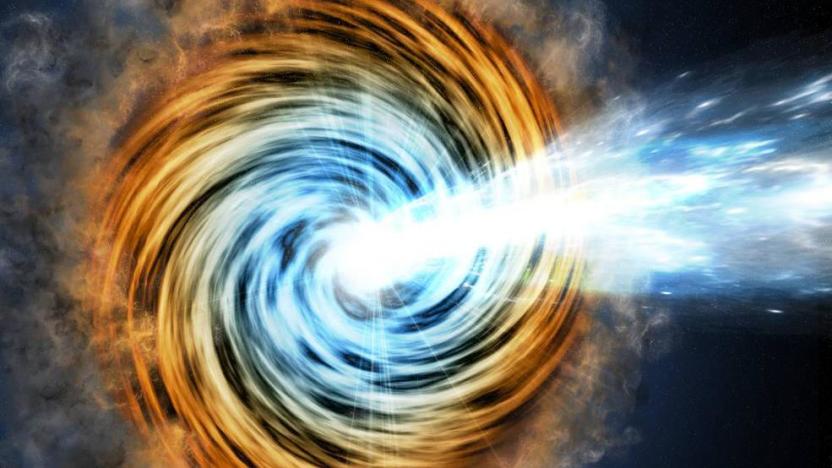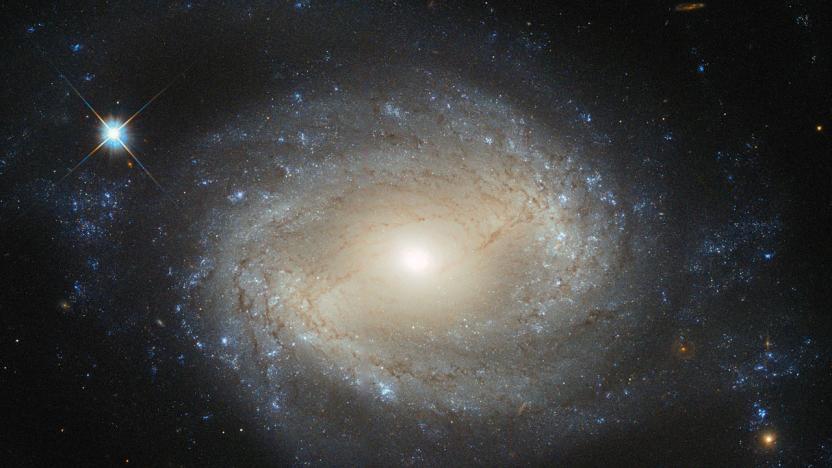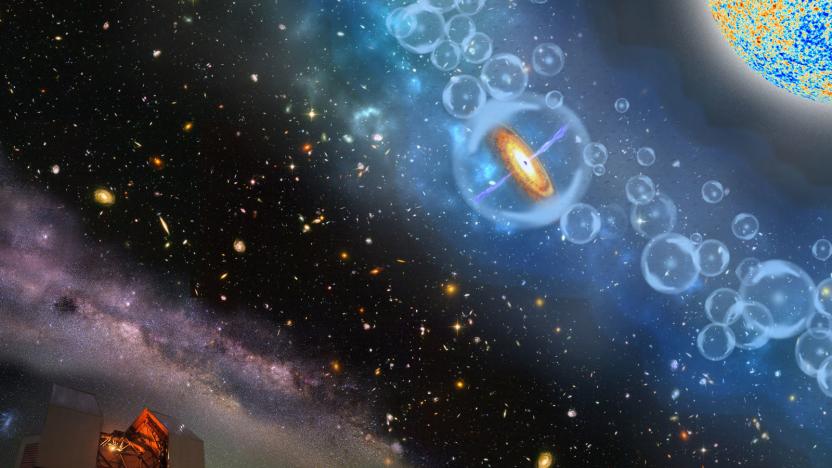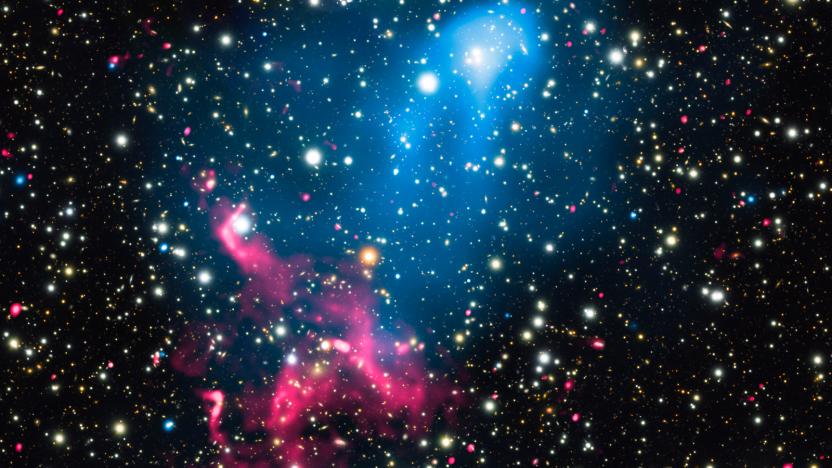supermassiveblackhole
Latest

Scientists trace the origin of high-energy cosmic radiation
This week, the National Science Foundation announced a groundbreaking discovery that provides answers to a question scientists have been asking for decades. A team at the NSF IceCube Neutrino Observatory at the Amundsen-Scott South Pole Station was able to trace the source of high-energy cosmic rays to their source: a blazar, which is a galaxy center that produces massive particle jets, powered by a supermassive black hole.

Supermassive black holes may control galaxy formation
Scientists have suspected for awhile that the supermassive black holes at the center of most galaxies affect the formation of stars within that galaxy. Now, in a study published this week in The Astrophysical Journal, scientists may have found the mechanism for how that happens. A team led by Shelley Wright, a physics professor at the University of California San Diego, found that the winds generated by these energetic stellar objects blow throughout a galaxy and affect the way stars form.

Farthest-ever supermassive black hole reveals the early universe
Quasars are supermassive black holes at the center of galaxies that actively consume gas and dust. As mass falls into the black hole, it forms an accretion disk around the black hole and jets of matter that spew from the black hole. These features make quasars some of the brightest objects in the universe. And now, scientists have discovered the most distant supermassive black hole ever observed, which is within a quasar. Findings will be published in the journal Nature.

Hubble telescope spots 'runaway' black hole
Astronomers using NASA's Hubble Space Telescope have observed a supermassive black hole with a mass one million times that of our Sun hurtling away from its parent galaxy. It's the first confirmed case out of several suspected "runaway black holes," which required an immense amount of energy to get launched from the center of its galaxy. How much?

Scientists discover a cosmic-scale particle accelerator
Suddenly, even the Large Hadron Collider seems downright quaint. Researchers have found a combination of cosmic phenomena that's creating the universe's largest known particle accelerator. At least one supermassive black hole in a galaxy cluster has created a electromagnetic tunnel that's accelerating gas to high speeds, only for the gas to travel even faster as it interacts with shock waves from another cluster colliding with the first. The result is particles traveling at a significant portion of the speed of light -- no mean feat for anything that isn't, well, light.

Astronomers find a supersized black hole in a cosmic small town
The humongous black hole in the center of a galaxy called NGC 1600 took the MASSIVE Survey astronomers by surprise. It's not only almost as big as the largest one we've discovered, it's also located in a sparsely populated region of only 20 or so galaxies, 200 million light years away. To note, it's 17 billion times bigger than our sun, while the largest one that we know of is 21 billion times larger. Supermassive black holes, which weigh at least 10 billion suns, are typically found in the center of huge galaxies that reside in heavily populated areas. NASA says finding NGC 1600's was like finding a skyscraper in the middle of a small town.

Guitar Hero III getting triple-pack of Muse on May 8
It seems that Activision has stumbled across the correct formula for getting us to drop our drumsticks and don our trusty, dusty Les Paul peripherals -- a three-song DLC pack for Guitar Hero III featuring the music of the epic British prog-rock trio, Muse. As of May 8, "Supermassive Black Hole" and "Exo-Politics" from their 2006 album Black Holes and Revelations as well as the fan-favorite "Stockholm Syndrome" from 2003's Absolution will be available to download for a heretofore unannounced price (we're assuming it will match the $6.25 price of former GHIII packs). We've got videos for all three tunes after the jump -- go decide which ones are purchase-worthy! (Hint: All of them.)




